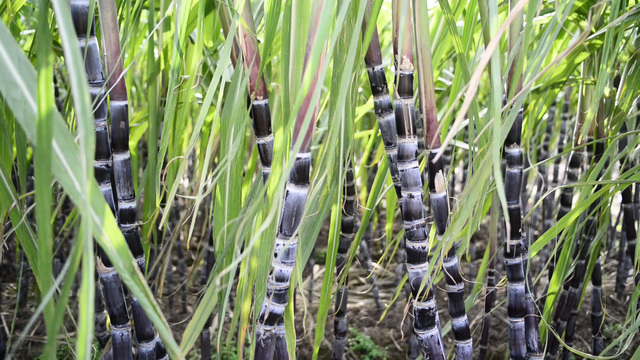VANILLA BEANS | SOYBEAN OIL | SOYMEAL & CAKE | COCOA BEANS | COFFEE BEANS
How to grow SUGARCANE in Uganda
 Sugarcane Plantation in Uganda
Sugarcane Plantation in UgandaSugarcane is one of the tropical herbs of the grass family consumed to date. Sugarcane locally known as “Ekikajo” is an excellent product used to make a sweetener called sugar.
Common Sugarcane varieties in Uganda
There are three varieties of sugarcane; and they include:
Chewing cane - these are sweet moist, soft fi6er canes that are eaten row. Local example we have is Goa canes, noble canes.
Crystal canes - these are used to make cane sugar, a sweetener we all enjoy in our tea e.g. black tanna, and stripped tanna.
Syrup cane - these are used in making syrups for medicines and other food preservative use.
Contact us here to buy Sugarcane and Sugarcane cuttings for planting in Uganda
Soil requirements for growing Sugarcane in Uganda
You will get best results in well drained, deep, loamy soil with an optimum soil pH of about 6.5.
How to propagate Sugarcane on your farm
Sugarcane is a vegetatively started grass, and its propagation is done using sugarcane plant parts like cane settings; settings are sections of the cane stalks containing buds.
How to plant Sugarcane in Uganda
Sugarcane is a vegetatively started grass, and its propagation is done using sugarcane plant parts like cane settings; settings are sections of the cane stalks containing buds.
Alternatively bud chips can be used; the buds are little portions of stem with one bud.
How to plant Sugarcane in Uganda
Planting starts with proper growing materials, so prepare the bud chips from whole cane using a sharp edged knife.
When cutting ensure that each stem has abud on it. Canes can be started in the bed or directly planted for small fields.
Plant using budded chips or on raised nursery bed using a spacing of 7.5 cm between the inter rows at a rate of 300 buds per square meter.
Alternatively a nursery can be raised in poly bags with homogeneous mixture of equal quantity of soil, sand and well rotten compost.
When the seedlings are of about 6 weeks, transplant them to a well prepared field.
Make furrows approximately15cm deep, then transfer your sprouted sets into the furrows and plant them at 45 degree angle or lay them horizontally.
Then cover the settings lightly with soil to support further sprouting. Sugarcane being a giant crop producing a huge quantity of mass, it should be supplied with phosphorus and nitrogen fertilizers.
Contact us here to buy Sugarcane and Sugarcane cuttings for planting in Uganda
How best to Harvest Sugarcane in Africa
After four months you should be able to harvest your sugarcane.
Picking should be based on weather the leaves on the plant have yellowed or the general material appearance of the crop.
To harvest the cane at peak maturity cut the cane to ground level, then detop at appropriate height so that the top immature internodes are removed.
Then properly clean the cane to remove the extra dirt and parts like the leaves, trash and the roots.
Contact us here to buy Sugarcane and Sugarcane cuttings for planting in Uganda
About the Market for Sugarcane in Uganda
Depending on the variety you have grown you can market your canes in many market niches e.g. the chewing canes can be sold to house hold consumer in communities, and the crystal canes are well demanded by the sugar manufacturing industries.
Quick tips for planting sugarcane in Africa
- Clear up area meant for planting.
- Make furrows in rows of 15cm deep.
- Lay in sugarcane setts horizontally, or at an angle in to the furrows.
- Thinly cover the setts with soil to facilitated shoot development
- Water to provide moisture needed for plant growth
- Like any other crop have a weeding routine to cut off competition with other crops
- After 4 months you can go ahead to harvest your sugarcane
Contact us here to buy Sugarcane and Sugarcane cuttings for planting in Uganda
Have a Question or Great Story About This Plant Guide?
Do you have a Question or Comment about this plant Guide? Then Share it!
If you haven't yet found what you were looking for or you need detailed information about the subject matter on this page then... feel free to ask our business travel consultants. |




